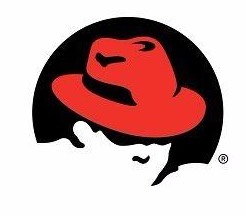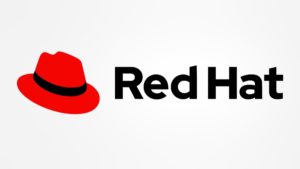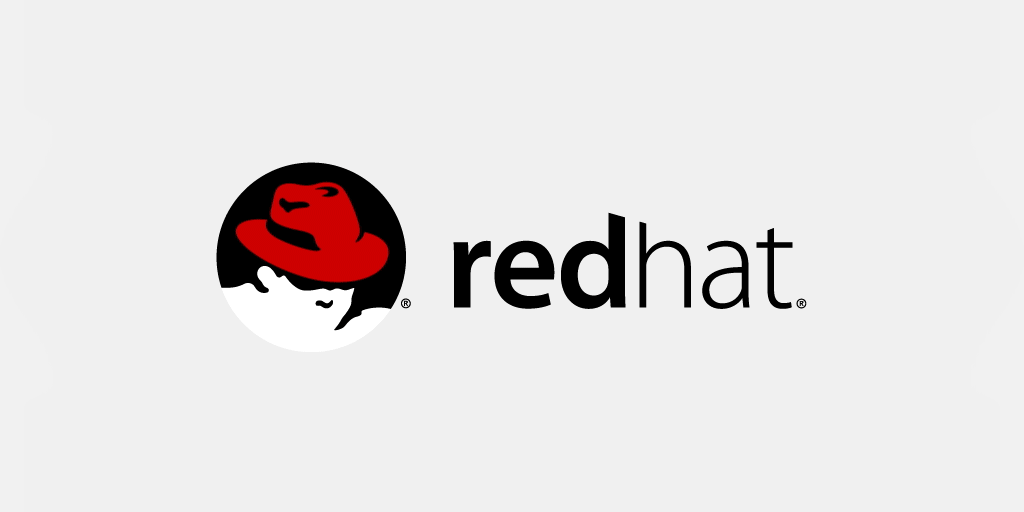 UPDATED: The shadowman wearing a red fedora has been the symbol of Linux and open source for many years. There are people in the industry who proudly roll up their sleeves to show their shadowman tattoos. Red Hat is now a force to reckon with as a critical provider of open source solutions in the datacentre space. But 16 years ago, the Red Hat brand was overshadowed by more prominent IT brands in a monopolistic technology industry. According to IDC, Red Hat Enterprise Linux (RHEL) is poised to impact more than $10 trillion in global business revenues in 2019. It’s been estimated that one-eight of all enterprise workloads in the world run on the RHEL operating system. Even old arch enemies like AWS, Google, Alibaba, and Microsoft are stepping forward to partner with Red Hat. The brand is more prominent today and plays a vital role in the datacentre – so the brand logo had to keep up with that, and it was time for change. To do that, Red Hat announced the Open Brand Project at the end of 2016. In keeping with the open source community spirit of sharing and collaboration, it invited partners, customers, analysts, and media to participate in the redesign of its logo.
UPDATED: The shadowman wearing a red fedora has been the symbol of Linux and open source for many years. There are people in the industry who proudly roll up their sleeves to show their shadowman tattoos. Red Hat is now a force to reckon with as a critical provider of open source solutions in the datacentre space. But 16 years ago, the Red Hat brand was overshadowed by more prominent IT brands in a monopolistic technology industry. According to IDC, Red Hat Enterprise Linux (RHEL) is poised to impact more than $10 trillion in global business revenues in 2019. It’s been estimated that one-eight of all enterprise workloads in the world run on the RHEL operating system. Even old arch enemies like AWS, Google, Alibaba, and Microsoft are stepping forward to partner with Red Hat. The brand is more prominent today and plays a vital role in the datacentre – so the brand logo had to keep up with that, and it was time for change. To do that, Red Hat announced the Open Brand Project at the end of 2016. In keeping with the open source community spirit of sharing and collaboration, it invited partners, customers, analysts, and media to participate in the redesign of its logo.
“The Open Brand Project is the only one of its kind in the industry that uses the principles and the ethos of what Red Hat does, in the way it thinks and approaches society and communities,” said Burzeen Vakil, Chief of Marketing, Red Hat India and South Asia. “It opens up how we want to look, and it opens up the brand project — it says we need to do something different. It has been 16 – 17 years since the shadowman has been our symbol and the way we represent ourselves. We wanted to open this up to the world, so we thought why not open it up to people who have been associated with Red Hat in any capacity. We asked them to give their honest and opinionated statements; to criticize and suggest about the brand look: the colour, shape of the logo.”
New Hat, Same Soul

Red Hat created a website, hired a design consultant, deployed an in-house design team, and listened to feedback coming from the ecosystem—and continually made changes.
Vakil informs that the designer elements came in from the in-house team at Red Hat Studio. It also partnered with Pentagram, an international design agency. The internal and external design teams captured the world’s essence and perceptions of the Red Hat brand. Feedback was received through the website. And Red Hat conducted surveys to capture what people wanted.
“When we did the survey, 81% of the respondents said that the fedora should not go away as it symbolizes open source and the work of the community. But we said we needed a bolder look as we have a much larger portfolio today. We also felt that, in terms of the brand identity and the optics, the size of the brand/logo is really the same (dimensions). But from a visual appeal, we always looked smaller (compared to other brands). And in the world of digital advertising and social media, a brand needs to stand out, and be bold, bright, and strong,” added Vakil.
So Red Hat decided to change the hat, and make the logo more prominent – new hat, same soul. The furtive shadowman has also gone away, leaving behind his red fedora — which is the true spirit of the Linux open source community.
Vakil clarified that this was not a crowdsourcing project. Rather, it was an inclusive exercise, to involve the community.
From Shadow to Frontline
Part superhero, part private detective, the old Red Hat shadowman logo reflected the company’s origin story. In the early days of datacentres, everyone embraced proprietary technology stacks from technology monopolies. The story goes that Red Hat was trying to bring open source into the datacentre, sneaking past the barriers built by proprietary technology companies.
But as enterprises realised the pitfalls of proprietary technology and vendor lock-in, they eventually embraced Linux and open source technology. Linux really took off with the Internet. In fact, more than half the servers on the Internet run on the Linux OS today. So Red Hat does not need to sneak into the datacentre anymore, because it has already been accepted.
“We have moved into the real estate of a datacentre and above the bare metal, just below the application (layer). So we needed our positioning to change and not to be viewed as a Linux community, but as an enterprise-ready open source organisation giving you everything that open source and the communities bring together, but ensuring that it is enterprise-grade,” concluded Vakil.









